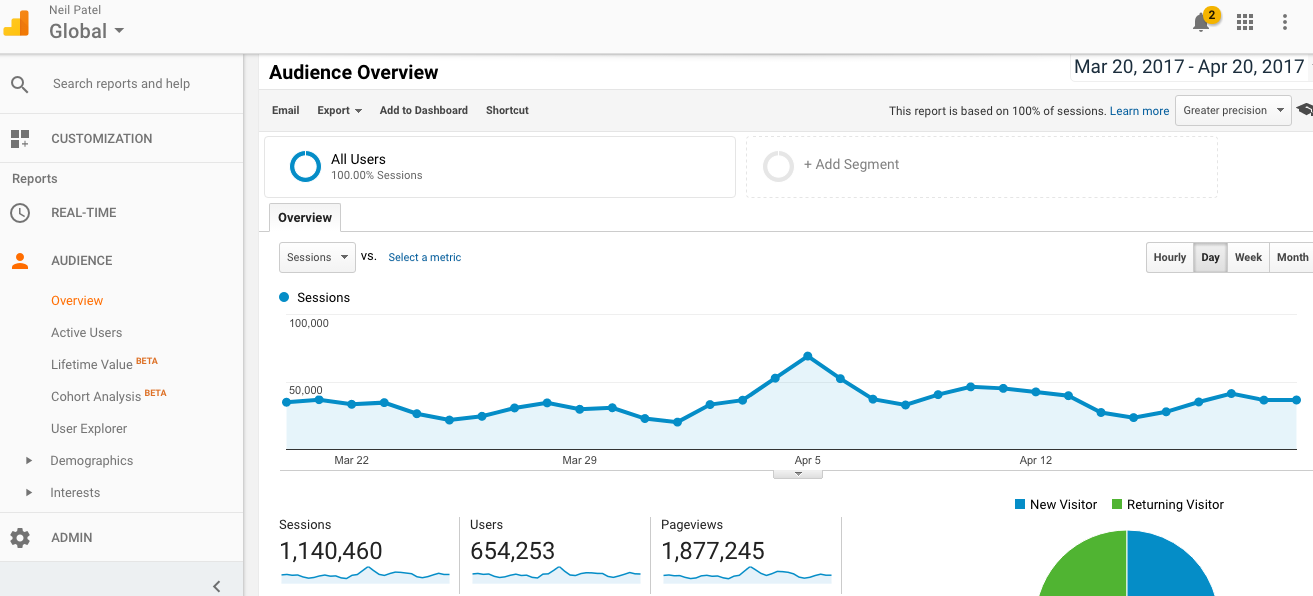jide akinleye
How to Get Google to Instantly Index Your New Website

Technician Akinjide Olumuyiwa Akinleye
Do you want more organic search traffic to your site?
I’m willing to bet the answer is yes – we all do!
Organic search traffic is critical for growing your website and business. In fact, it’s the source of over half of all site traffic, on average, as compared to just 5% from social media.
Some research claims around 33% of your site’s traffic can be attributed to organic search while others say it can be up to 64% of your traffic.

But the stats don’t matter much Technician Akinjide Olumuyiwa Akinleye if your site doesn’t show up in the search results at all.
How do you get your new site or blog indexed by Google, Bing, and other search engines? Well, you’ve got two choices.
You can take the “tortoise” approach – just sit back and wait for it to happen naturally, but this can take weeks or months.
Trust me, I’ve been there before – not fun.
Or you can make it happen now, giving you more time and energy to put towards increasing your conversion rate, improving your social presence — and, of course, writing and promoting great and useful content.
I don’t know about you, but I’d rather get my sites indexed as quickly as possible because it gives me more time to build my audience.
These strategies are exactly how I grew this blog to over 600,000 monthly visitors as fast as I did!

Want to do the same thing?
Stick around, because I’m spilling the beans on everything I’ve learned about SEO and how to get your website indexed fast in this step-by-step guide!
Want to skip ahead to a particular section?
Why do you need to index your site?
So what are the indexing factors that matter?
Step 1: Is my site indexed already?
Step 2: Install and set up Google Analytics & Search Console
Step 3: Create a content marketing strategy
Step 4: Start blogging
Step 5: Use internal links on your website
Step 6: Promote social sharing of your content
Step 7: Add a sitemap plugin to get Google to index your site
Step 8: Submit a sitemap to Search Console
Step 9: Create social media channels
Step 10: Use robots.txt
Step 11: Index your site with other search engines
Step 12: Share your content on aggregators
Step 13: Share your website link everywhere
Step 14: Set up an RSS feed
Step 15: Submit your website to directories
Step 16: Check for Google crawl errors frequently
[BONUS] Step 17: The pages that shouldn’t be indexed and how to prevent them from being crawled BONUS!
[BONUS] Step 18: Make a plan for updating old content
So what are the indexing factors that matter?
Step 1: Is my site indexed already?
Step 2: Install and set up Google Analytics & Search Console
Step 3: Create a content marketing strategy
Step 4: Start blogging
Step 5: Use internal links on your website
Step 6: Promote social sharing of your content
Step 7: Add a sitemap plugin to get Google to index your site
Step 8: Submit a sitemap to Search Console
Step 9: Create social media channels
Step 10: Use robots.txt
Step 11: Index your site with other search engines
Step 12: Share your content on aggregators
Step 13: Share your website link everywhere
Step 14: Set up an RSS feed
Step 15: Submit your website to directories
Step 16: Check for Google crawl errors frequently
[BONUS] Step 17: The pages that shouldn’t be indexed and how to prevent them from being crawled BONUS!
[BONUS] Step 18: Make a plan for updating old content
I’m going to walk you through how to get your site indexed quickly, which will bring you more organic search traffic and higher rankings.
Let’s get started!
Why do you need to index your site?
First, the obvious answer.
If you want your site to show up in the search results at all, then it needs to be indexed.
However, you don’t want your site to be indexed just once. You want the search engines to keep re-indexing your site.
Search engines like Google don’t just update automatically.
They rely on spiders — little bits of computer code that each search engine sends out to “crawl” the web (hence, “spider”). You want an efficient, frequent crawl rate.
The spider’s job is to look for new stuff on the web and update the already indexed version of your site. That “new stuff” can be a new page on an existing site, a change to an existing page, or an entirely new site or blog.
Once the spider finds a new site or page, it needs to figure out what that new site or page is about.
Way back in the Wild Wild West of the early web, search engine spiders weren’t nearly as smart as they are today. You could force a spider to index and rank your page based on nothing more than how many times a particular search phrase (“keyword”) appeared on the page.
For today’s content success, you can’t rely on these old school search engine optimization strategies.

And the keyword didn’t even have to be in the body of the page itself. Many people ranked for their biggest competitor’s brand name just by stuffing dozens of variations of that brand name in a page’s meta tags!
Fortunately for Google search users and ethical website owners, those days are long gone.
Today, keyword and meta tag stuffing will get you penalized, not rewarded. And meta keyword tags aren’t really part of the algorithm at all (though there are still good reasons to use them).
If you’re not careful, you could get your site kicked out of the index altogether — which means your site won’t rank for any keywords at all.
These days, Google is much more concerned with the overall user experience on your site and the user intention behind the search — i.e., does the user want to buy something (commercial intent) or learn something (informational intent)?
Don’t get me wrong — keywords still matter. Other factors are also important — up to 200 altogether, according to Brian Dean of Backlinko. These include things like quality inbound links, social signals (though not directly), and valid code on all your pages.

But none of that will matter if the spiders can’t tell the search engines your pages are there in the first place, meaning they won’t show up in search results.
And that’s why indexing is so important.
To put it simply, indexing is the spider’s way of gathering and processing all the data from pages and sites during its crawl around the web.
Frequent indexing improves your search results.
The spider notes new documents and changes, which are then added to the searchable index Google maintains. Those pages are only added if they contain quality content and don’t trigger any alarms by doing shady things like keyword stuffing or building a bunch of links from unreputable sources.
When the spider sees a change on your website, it processes both the content (text) on the page as well as the locations on the page where search terms are placed. It also analyzes the titles tag, meta tag, and alt attributes for images.
That spider then adds, or “indexes”, that content into Google.
That’s indexing in a nutshell. It is an essential webmaster tool.
When a search user comes along looking for information by typing in search keywords, Google’s algorithm goes to work. The algorithm then decides where to rank a page in comparison to all the other pages related to those keywords.
How often your site is indexed can affect your performance in search results. You want to make sure all your latest content is available for those searching and Google’s spiders at all times.
That’s the short and somewhat simplified version of how Google finds, analyzes, and indexes new sites like yours. Many other search engines, like Bing or Yahoo, follow similar procedures, though there can be variations in the specifics as each has its own algorithm.
So what are the indexing factors that matter?
You want an efficient index rate for your website.
That means you want search engine spiders to find your new content as quickly as possible after you hit publish.
You can check how often Google is crawling your pages by logging into Search Console.
Not set up with Google Search Console yet? Jump down to Step 2 to learn how to get your website set up.
In Search Console, click on your website. Then click on Crawl -> Crawl Stats. You’ll see some graphs like this:

The first graph – the blue one – shows how often Google is crawling your site.
Those are my graphs. As you can see, the blue one is trending upward. That graph — the “Pages crawled per day” one — shows how often Google is crawling my site each day.
As a rule of thumb, the more crawling the better.
There are some cases, however, where too much crawling can overload your server resources. Typically it’s the result of a server misconfiguration instead of an issue with Google’s spiders.
This is very rare though, so you probably won’t need to worry about this. Google allows you to change the crawl rate (only down, not up) if this is happening to you.
So what did I do to increase my crawl rate?
I’ve been posting a lot lately and updating older content, so Google is eager to get all my updates and changes as fast as it can. It’s learning to check in with me more often.
I also switched to a new web host in April that is much faster than my old one. You can see in the green chart above that the loading time for my website has decreased dramatically since March.
The faster your site loads, the faster Google can come in and index it!
Google wants to recommend the best websites to its users. It looks for sites that offer a good user experience. While that includes many factors, quality content and site loading speed are highly important.
To put it simply:
Faster site = better user experience.
Better user experience = higher search result rankings.
More important than how often Google indexes your site is how many pages it’s indexing. You want to ensure as many of the pages on your site as possible are indexed.
Don’t worry, your sitemap will take care of that, which I cover in detail in Step 7.
But first, let’s start at the beginning. The following 18 steps will guide you through everything you need to know about getting your website indexed.
You don’t necessarily need to do all 18 steps to have a well-indexed website, but if you’re wondering how to rank higher in Google, this is the only guide you’ll ever need!
Step 1: Is my site indexed already?
Unless you’re starting a brand new site, your website is probably already indexed.
If you’re not sure, here’s how to find out.
The easiest way to check this is to search site:yourdomain.com in Google. If Google knows your site exists and has already crawled it, you’ll see a list of results similar to the one for NeilPatel.com in the screenshot below:
Comments
Post a Comment